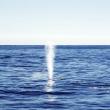Whale watching: A lesson in patience
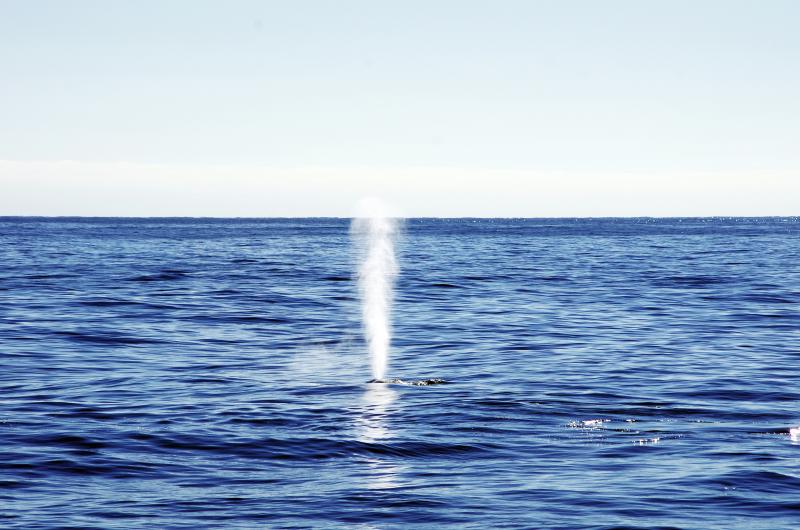 Thar she blows! The first sighting of a fin whale spout created a lot of excitement during a whale watch on Oct. 5. Courtesy of Gwyn Williams
Thar she blows! The first sighting of a fin whale spout created a lot of excitement during a whale watch on Oct. 5. Courtesy of Gwyn Williams
 A fin whale. Courtesy of Gwyn Williams
A fin whale. Courtesy of Gwyn Williams
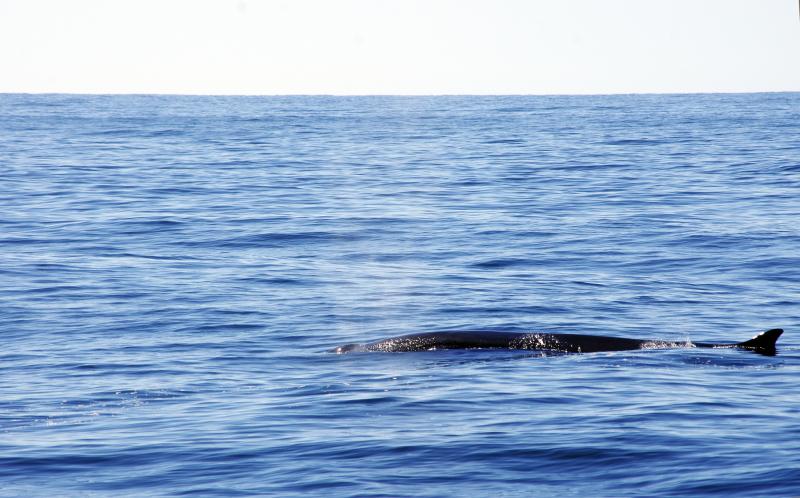 A fin whale. Courtesy of Gwyn Williams
A fin whale. Courtesy of Gwyn Williams
 A fin whale. Courtesy of Gwyn Williams
A fin whale. Courtesy of Gwyn Williams
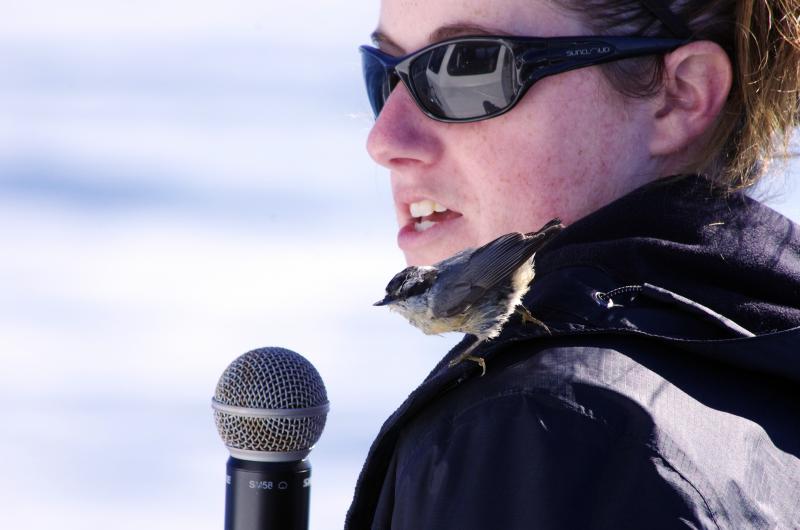 A nuthatch perches on narrator Nori Mcleod’s shoulder during the Oct. 5 trip. Courtesy of Gwyn Williams
A nuthatch perches on narrator Nori Mcleod’s shoulder during the Oct. 5 trip. Courtesy of Gwyn Williams
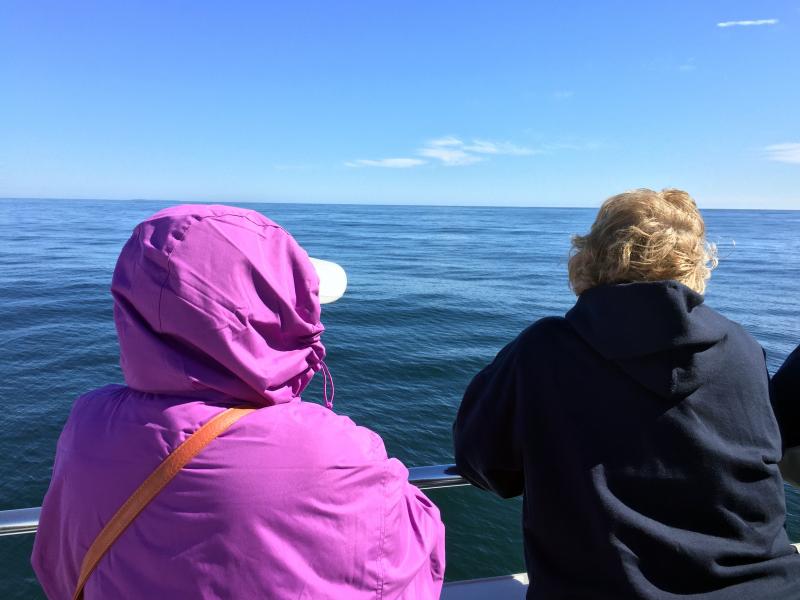 Passengers are on the lookout for whales. SUZI THAYER/Boothbay Register
Passengers are on the lookout for whales. SUZI THAYER/Boothbay Register
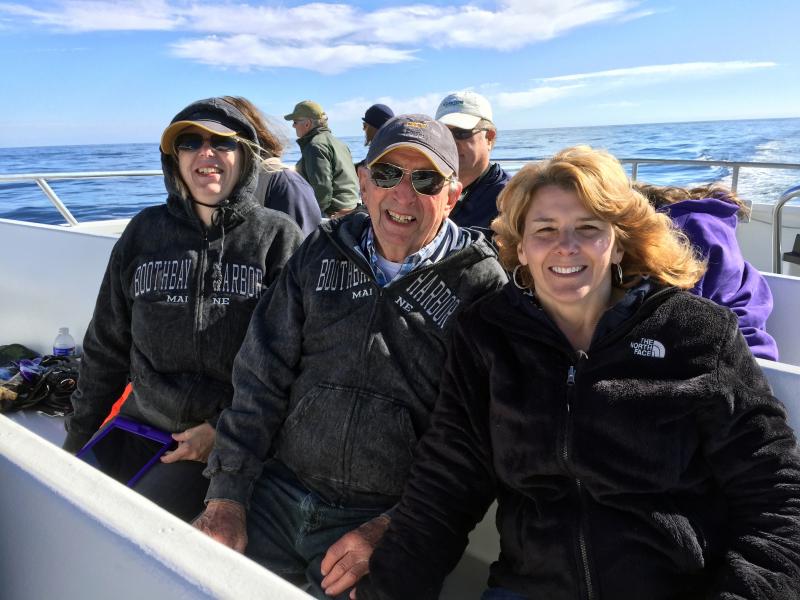 Janet Devalder Thornton, left, her sister, Linda Mazzochetti, and their father Raymond Vogt, from Rochester, New York, hope to see a whale. SUZI THAYER/Boothbay Register
Janet Devalder Thornton, left, her sister, Linda Mazzochetti, and their father Raymond Vogt, from Rochester, New York, hope to see a whale. SUZI THAYER/Boothbay Register
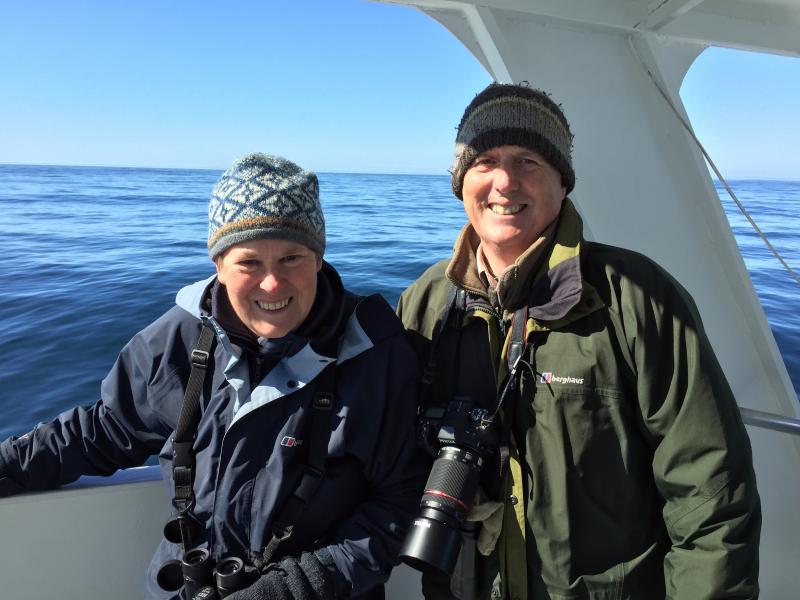 A couple from just north of London, Gwyn and Audrey Williams, came to Maine in hopes of seeing a whale. SUZI THAYER/Boothbay Register
A couple from just north of London, Gwyn and Audrey Williams, came to Maine in hopes of seeing a whale. SUZI THAYER/Boothbay Register
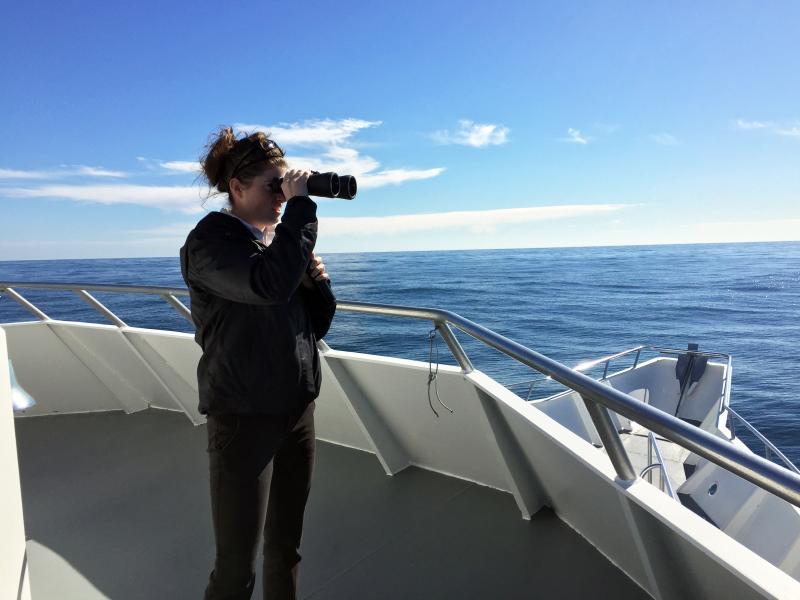 Nori Mcleod looks for a whale. SUZI THAYER/Boothbay Register
Nori Mcleod looks for a whale. SUZI THAYER/Boothbay Register
 The Harbor Princess heads out to sea with passengers looking for whales. SUZI THAYER/Boothbay Register
The Harbor Princess heads out to sea with passengers looking for whales. SUZI THAYER/Boothbay Register
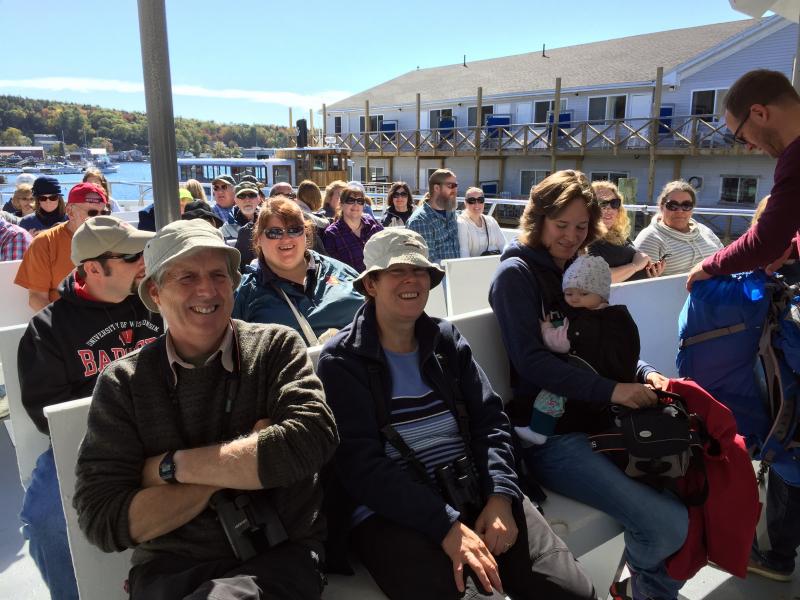 Passengers aboard the Harbor Princess were hopeful they’d spot a whale or two.They did. SUZI THAYER/Boothbay Register
Passengers aboard the Harbor Princess were hopeful they’d spot a whale or two.They did. SUZI THAYER/Boothbay Register
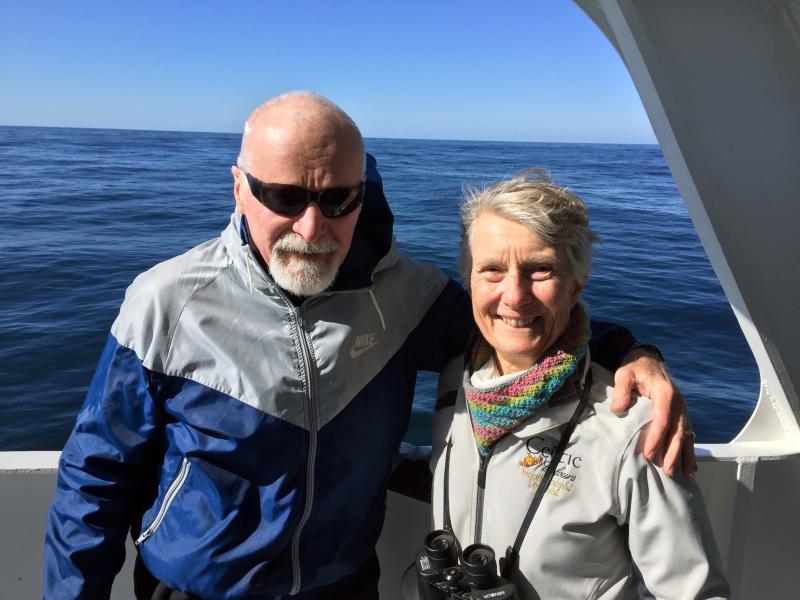 Art and Sue Stukey from Montpelier, Vermont are on the Harbor Princess for their third whale watch. SUZI THAYER/Boothbay Register
Art and Sue Stukey from Montpelier, Vermont are on the Harbor Princess for their third whale watch. SUZI THAYER/Boothbay Register
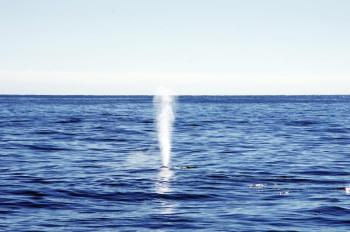 Thar she blows! The first sighting of a fin whale spout created a lot of excitement during a whale watch on Oct. 5. Courtesy of Gwyn Williams
Thar she blows! The first sighting of a fin whale spout created a lot of excitement during a whale watch on Oct. 5. Courtesy of Gwyn Williams
 A fin whale. Courtesy of Gwyn Williams
A fin whale. Courtesy of Gwyn Williams
 A fin whale. Courtesy of Gwyn Williams
A fin whale. Courtesy of Gwyn Williams
 A fin whale. Courtesy of Gwyn Williams
A fin whale. Courtesy of Gwyn Williams
 A nuthatch perches on narrator Nori Mcleod’s shoulder during the Oct. 5 trip. Courtesy of Gwyn Williams
A nuthatch perches on narrator Nori Mcleod’s shoulder during the Oct. 5 trip. Courtesy of Gwyn Williams
 Passengers are on the lookout for whales. SUZI THAYER/Boothbay Register
Passengers are on the lookout for whales. SUZI THAYER/Boothbay Register
 Janet Devalder Thornton, left, her sister, Linda Mazzochetti, and their father Raymond Vogt, from Rochester, New York, hope to see a whale. SUZI THAYER/Boothbay Register
Janet Devalder Thornton, left, her sister, Linda Mazzochetti, and their father Raymond Vogt, from Rochester, New York, hope to see a whale. SUZI THAYER/Boothbay Register
 A couple from just north of London, Gwyn and Audrey Williams, came to Maine in hopes of seeing a whale. SUZI THAYER/Boothbay Register
A couple from just north of London, Gwyn and Audrey Williams, came to Maine in hopes of seeing a whale. SUZI THAYER/Boothbay Register
 Nori Mcleod looks for a whale. SUZI THAYER/Boothbay Register
Nori Mcleod looks for a whale. SUZI THAYER/Boothbay Register
 The Harbor Princess heads out to sea with passengers looking for whales. SUZI THAYER/Boothbay Register
The Harbor Princess heads out to sea with passengers looking for whales. SUZI THAYER/Boothbay Register
 Passengers aboard the Harbor Princess were hopeful they’d spot a whale or two.They did. SUZI THAYER/Boothbay Register
Passengers aboard the Harbor Princess were hopeful they’d spot a whale or two.They did. SUZI THAYER/Boothbay Register
 Art and Sue Stukey from Montpelier, Vermont are on the Harbor Princess for their third whale watch. SUZI THAYER/Boothbay Register
Art and Sue Stukey from Montpelier, Vermont are on the Harbor Princess for their third whale watch. SUZI THAYER/Boothbay Register
Capt. Bob Fish started his whale-watching cruise over 80 years ago. It has never slowed down.
Now his son, Capt. John Fish, runs the business.
Fish said the best time to spot whales is during the summer months before the whales begin to migrate to warmer waters. But even in October, passengers in hopes of spotting one or two haven't been disappointed.
On Oct. 5, the Harbor Princess set out from Pier One in Boothbay Harbor with 51 passengers. It was a perfect early October day, with clear blue skies and light winds, and Capt. Steve was at the helm. His narrator, Nori McLeod, a marine biologist and an expert on whales and other marine creatures, was his co-pilot. She spoke about the types of whales that might be seen that day, and offered tidbits about other marine life and birds that often appear during whale-watching cruises.
Soon after the Harbor Princess left the outer harbor, a couple seals were spotted, and a little further out some harbor porpoises surfaced for a brief show.
Capt. Steve said he had a few options for places to head for whale sightings. “There are around four or five places we go. During the summer we go out every day and can keep track of them, but this time of year they're more on the move.” The whales are beginning to migrate, so it's hit or miss as to whether they'll be spotted. “Not all of them migrate, but most do,” he said. “But fishermen tell me they're still seeing whales up around Southwest Harbor. Hopefully we'll see some of those as they head by.”
He said ocean currents also affect the travel of the whales. “We don't have an El Nino current like they do on the west coast, but different things can affect the currents, and the whales are solely up here to feed, so it's all about where the food is.”
The second largest whales in the world, fin whales, averaging 60 to 80 feet and up to 260,000 pounds, were the ones most likely to be seen that day, but Mcleod said there was a possibility of seeing a blue, a humpback, a minke and/or a North Atlantic right whale, one of the most endangered of the whale species. There are only around 500 of them left in the North Atlantic.
Mcleod was on the sound system educating passengers about what they should be looking for, as the boat sped out to the likely sighting grounds. “You'll see water shooting up into the air followed by a sort of 'smoke bomb' and these spouts can be anywhere from a couple feet high to 30 feet in the air. So not only do you want to look at the area close to the boat but off in the distance as well. We also want to keep an eye out for any black shiny backs and triangular-shaped dorsal fins or any tails coming up out of the water.”
She went on to explain that whales are mammals, and therefore have lungs and need to come up for air. “On average the whales take between five and seven breaths at the surface before going down on a deep dive that can last anywhere from five to ten minutes, or up to a half hour.”
Capt. Steve said he does his best to find whales, for obvious reasons. It is, after all, a whale watch cruise, and most, if not all, the passengers bought their tickets with that in mind. “Some people don't really want to come out on a boat, but they want to see a whale, so I really want to find a whale for those people.”
Several harbor porpoises, the smallest of the whale species, were spotted during the cruise, but two and a half hours into the usually three-hour trip, not a whale had been sighted.
“We're only a couple miles from where we saw them yesterday,” he said. “Hopefully they're still there.” Shortly after that, two small puffins were spotted off the starboard bow, and a tiny nuthatch appeared and landed on Mcleod's shoulder. That was sweet, but nothing compared to the sighting of a sudden burst of a water spout, and then the back of an enormous sea creature surfacing and with a flip of its tail disappearing again below the surface of the ocean. Breathtaking.
There were three more sightings after that. The captain thought there were two or three different fin whales seen that day.
Event Date
Address
United States













